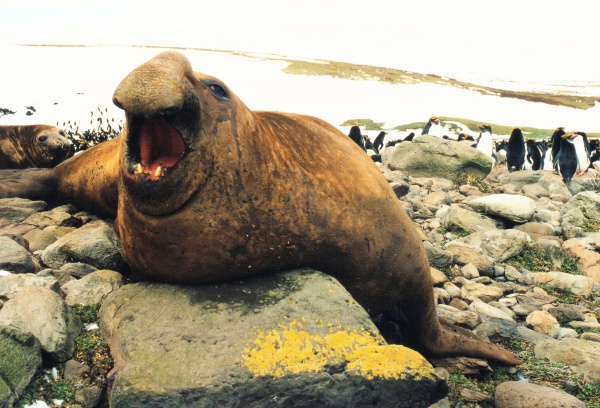Facts About Southern elephant seal
The southern elephant seal is the heavyweight champion of the marine mammal world, distinguishing itself as the largest member of the Pinnipedia clade and the Carnivora order. Renowned for their immense size and the males’ distinctive proboscis, these seals present a captivating spectacle. The males utilize their proboscis to produce loud roars, particularly during the breeding season, making them unmistakable. They dwarf other marine mammals and land-based carnivores in terms of size.
First described by Carl Linnaeus in 1758, southern elephant seals belong to the genus Mirounga. They exhibit remarkable sexual dimorphism, with males substantially larger than females. While a male can weigh up to a staggering 4,000 kg and reach lengths of 5.8 meters, females are considerably smaller, weighing between 400 and 900 kg.
These seals inhabit a broad range, with three subpopulations dispersed across different oceans, primarily breeding in subantarctic regions. Their numbers dwindled dangerously close to extinction in the 19th century due to rampant hunting. Thankfully, they have made a comeback, thanks to dedicated conservation efforts aimed at protecting their breeding grounds.
Southern elephant seals lead unique lives, spending extended periods on land, establishing strict dominance hierarchies among males, and engaging in complex breeding and mating rituals. They are also remarkable divers, plunging to great depths to hunt for squid and fish. Their hunting strategy relies heavily on their keen vision and the sensitivity of their vibrissae (whiskers).
Despite their size and prowess, they are not without natural predators. Orcas, leopard seals, and sharks pose significant threats to them.
One particularly famous southern elephant seal was Minazo, who gained fame at Japan’s Enoshima Aquarium. Known for his endearing habit of holding a bucket, Minazo became an internet sensation, inspiring the "lolrus" meme. His life and legacy have been celebrated in music and art, drawing attention to the plight of captive animals used for public entertainment.

 Peru
Peru